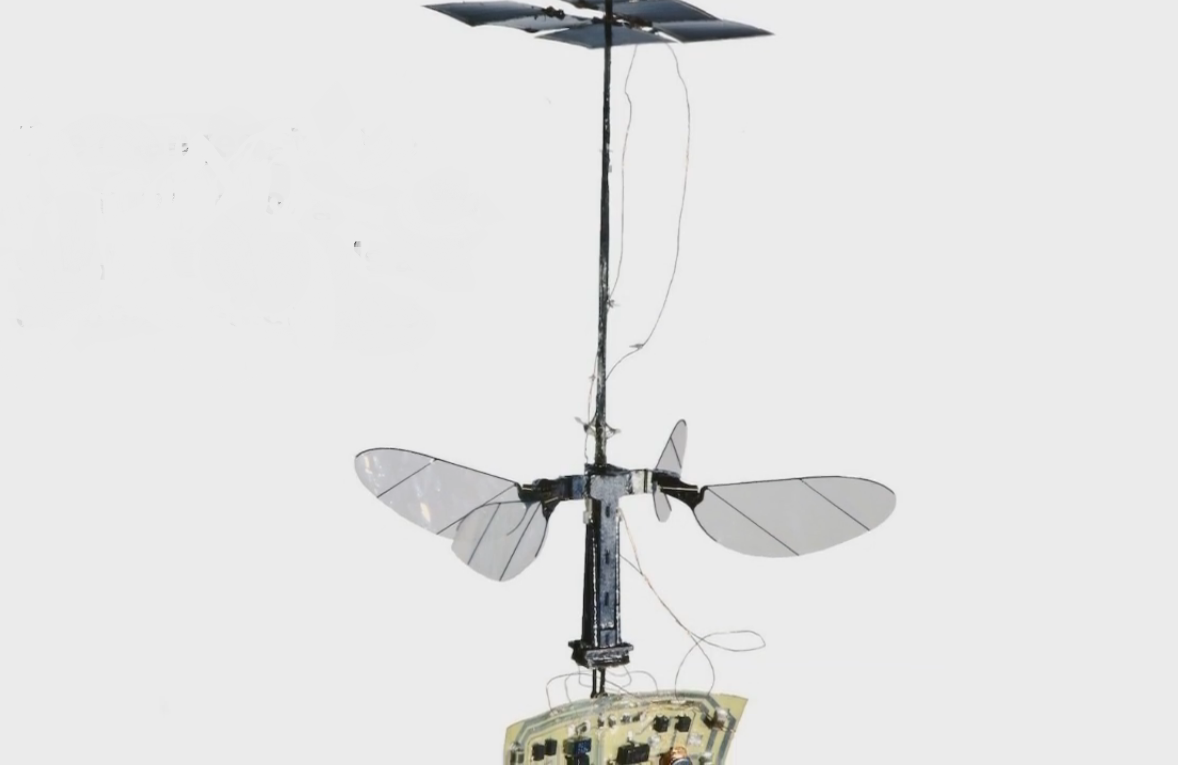This post is also available in:
 עברית (Hebrew)
עברית (Hebrew)
A tiny battery-less drone is being developed by the Harvard Microrobotics Lab and the Wyss Institute for Biologically Inspired Engineering. RoboBee is a tiny untethered drone that flies with wings similar to an insects. It is also the lightest untethered vehicle to achieve sustained flight.
The RoboBee is significantly smaller than any drone the United States military currently operates, making the FLIR Black Hornet seem like a full sized helicopter in comparison.
The tiny drone is too small to carry batteries. Instead it gets its energy supply from 6 tiny solar power cells. Up until recently the RoboBee also lacked the ability to maintain independent flight, without a tether or power cord. But, adding another pair of wings to the robotic insect, as well as the solar power cells, made it possible for the drone to fly on its own.
The end goal is to be able to control swarms of the tiny drone. Theoretically, these drones could be utilized for a number of applications, from surveillance to plant pollination.
As of now, the drones are still too small and light to carry any sensor payloads. Weighing only 259 milligrams, the drones are too light to fly against gentle breezes in outdoor weather. Although C4isrnet.com reports that the military has already invested in lightweight disposable sensors, so the end goals for the RoboBee are still in the realm of feasibility. In fact, under the right lighting conditions, the RoboBee is capable of carrying a 70 milligram payload. But actually attaching a usable sensor is still a challenge that awaits the engineers.
Should the RoboBee reach fully operational status, the robotic insect can assist in a plethora of applications, the majority of which being in the military and intelligence fields, but also in other fields such as meteorology, agriculture, and much more.


























